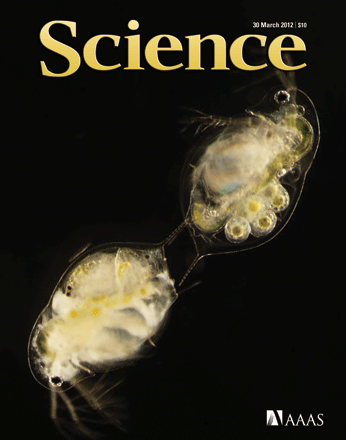导读:Science杂志刊登的两篇报告揭示了人类广泛使用的杀虫剂,会以多种方式伤害大黄蜂和蜜蜂,导致这两种蜂类种群迅速衰减。

两则新的研究揭示了一种广泛使用的杀虫剂会以多种方式伤害大黄蜂和蜜蜂。在最近几年中,蜜蜂种群有了迅速的衰减,其部分原因与一种叫做蜂群衰竭失调的现象有关。大黄蜂的种群也受到了伤害。研究人员提出了造成这些衰减的多种原因,其中包括杀虫剂,但人们不清楚杀虫剂究竟是如何造成其伤害的。Science杂志的这两项研究都对新烟碱类杀虫剂的作用进行了观察;该类杀虫剂是在上世纪90年代初被采用的,到现在已经成为全世界最广泛使用的农作物杀虫剂之一。
Penelope Whitehorn及其在英国的同事们让正在组建中的Bombus terrestris大黄蜂群接触一种低剂量的叫做吡虫啉的新烟碱类物质。研究人员接着将这些蜂群放置在一个封闭的实地现场,这些大黄蜂可在该实地现场中于自然条件下觅食6周。在该试验开始和结束的时候,研究人员对每个大黄蜂的蜂巢进行了称重——这些蜂巢中包括有大黄蜂、蜂蜡、蜂蜜、大黄蜂幼虫及花粉——以确定该蜂群成长了多少。与那些没有接触过吡虫啉的对照蜂群相比,那些接触过吡虫啉的蜂群重量增长较少,提示其摄入的食物较少。在该实验结束的时候,接触过吡虫啉的蜂群比对照组蜂群平均要小8%~12%。接触过吡虫啉的蜂群所产生的蜂后也要减少约85%。
在另一则报告中,Mickal Henry及其同事们给自由活动的蜜蜂身上装上了极小的射频识别或称“RFID”微芯片,它们被黏附于每只蜜蜂的胸部。这些装置可让研究人员在蜜蜂回到和离开其蜂巢时对其进行跟踪。研究人员接着给某些蜜蜂一个亚致死剂量的杀虫剂噻虫嗪。与对照组蜜蜂相比,这些接触了杀虫剂的蜜蜂在离开其蜂巢时死亡的可能性会增加大约2到3倍,这可能是因为杀虫剂干扰了蜜蜂的归巢导航系统。研究人员接着用来自跟踪实验的数据研发了一个模拟蜜蜂种群动态的数学模型。当将因归巢失败所引起的死亡结合到该模拟中时,该模型预计,接触了这一杀虫剂的蜂群数将会下降到某一难以恢复的地步。

Neonicotinoid Pesticide Reduces Bumble Bee Colony Growth and Queen Production
Penelope R. Whitehorn, Stephanie O’Connor, Felix L. Wackers, Dave Goulson
Growing evidence for declines in bee populations has caused great concern due to the valuable ecosystem services they provide. Neonicotinoid insecticides have been implicated in these declines as they occur at trace levels in the nectar and pollen of crop plants. We exposed colonies of the bumble bee Bombus terrestris in the lab to field-realistic levels of the neonicotinoid imidacloprid, then allowed them to develop naturally under field conditions. Treated colonies had a significantly reduced growth rate and suffered an 85% reduction in production of new queens compared to control colonies. Given the scale of use of neonicotinoids, we suggest that they may be having a considerable negative impact on wild bumble bee populations across the developed world.
文献链接:
A Common Pesticide Decreases Foraging Success and Survival in Honey Bees
Mickaël Henry, Maxime Beguin, Fabrice Requier, Orianne Rollin, Jean-François Odoux, Pierrick Aupinel, Jean Aptel, Sylvie Tchamitchian, Axel Decourtye
Nonlethal exposure of honey bees to thiamethoxam (neonicotinoid systemic pesticide) causes high mortality due to homing failure at levels that could put a colony at risk of collapse. Simulated exposure events on free-ranging foragers labeled with an RFID tag suggest that homing is impaired by thiamethoxam intoxication. These experiments offer new insights into the consequences of common neonicotinoid pesticides used worldwide.
文献链接:









